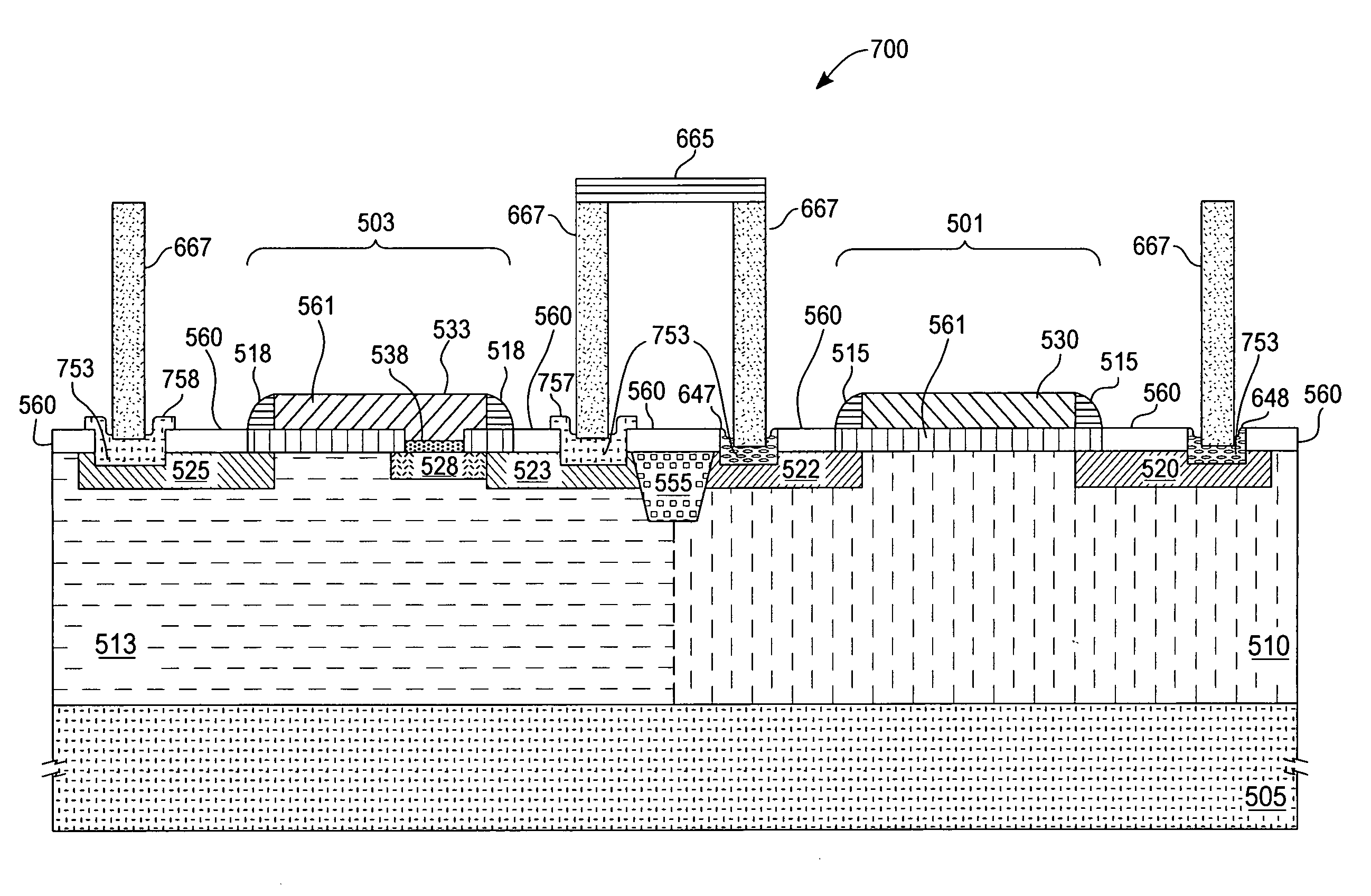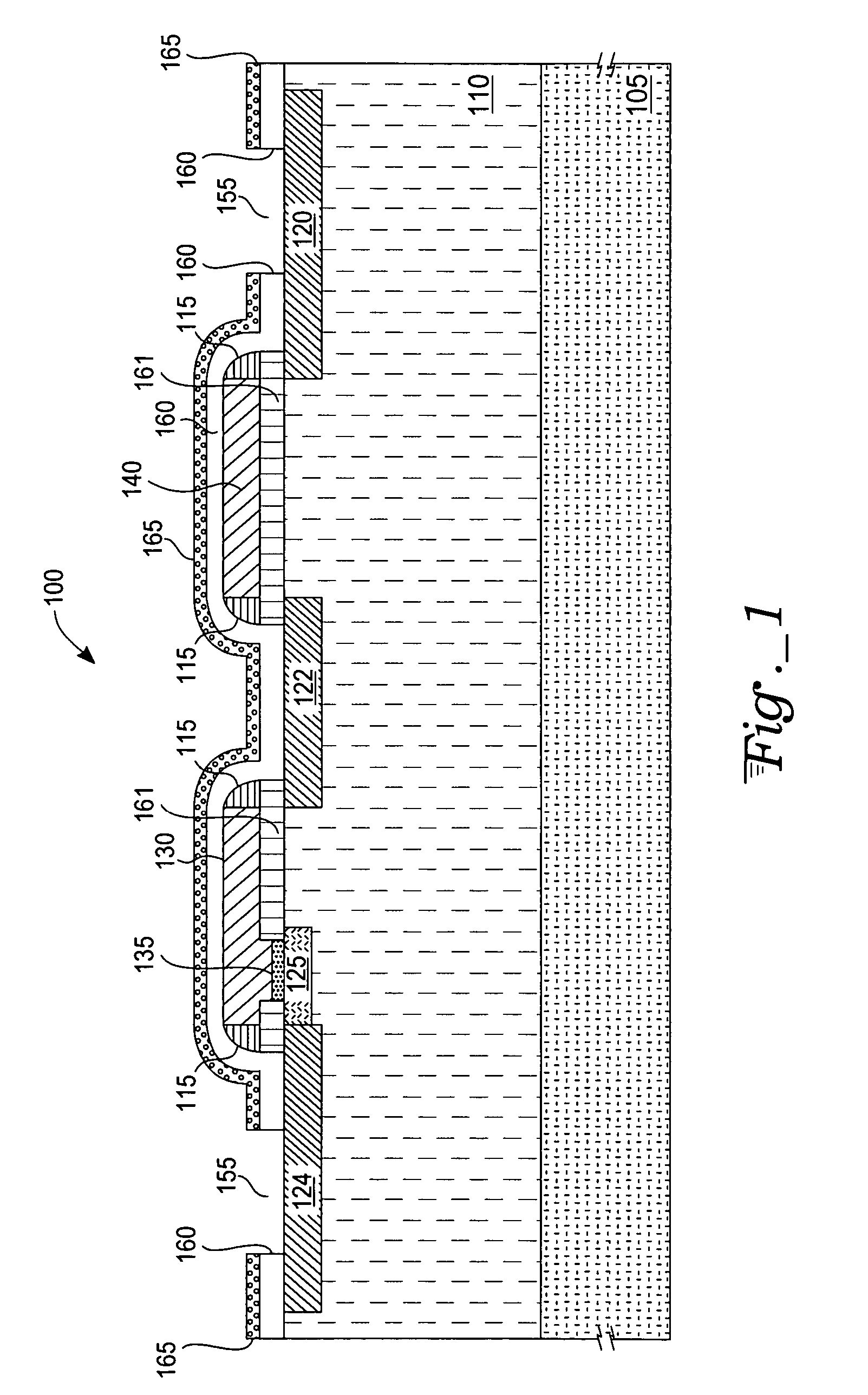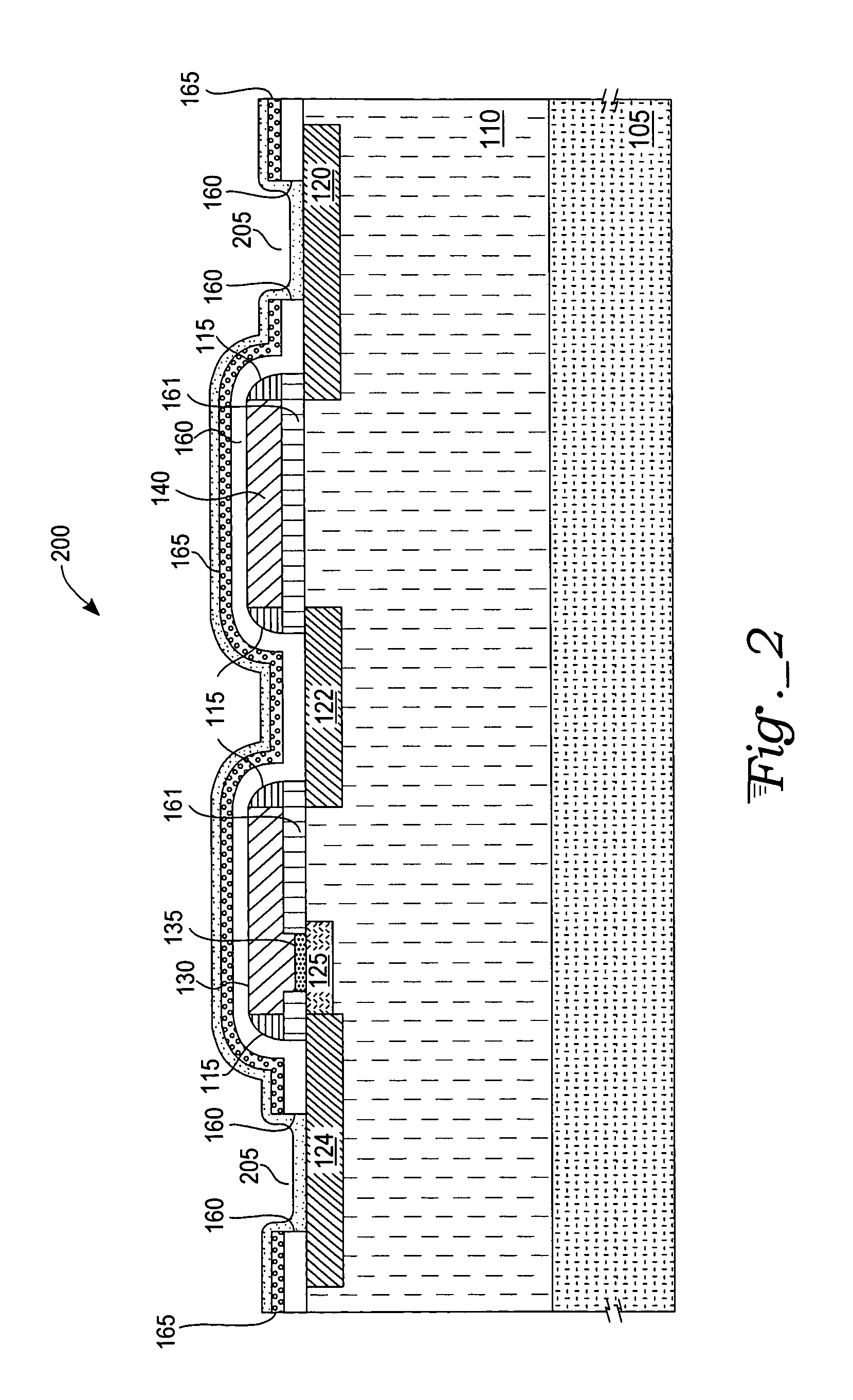Fabrication of an EEPROM cell with SiGe source/drain regions
a technology of source/drain region and fabrication method, which is applied in the direction of basic electric elements, electrical apparatus, semiconductor devices, etc., can solve the problems of no simple and economical way to integrate these two device types into a single integrated circuit, and achieve the effect of facilitating the programming of memory transistors
- Summary
- Abstract
- Description
- Claims
- Application Information
AI Technical Summary
Benefits of technology
Problems solved by technology
Method used
Image
Examples
Embodiment Construction
[0017]An electronic memory device of the present invention has source / drain junctions with a relatively high (e.g., about 14 volts or approximately 12–15 volts) breakdown voltage with respect to a well for a PMOS-PMOS type memory cell. The breakdown voltage of a well on a typical bipolar process is only about 10 volts. A lower well breakdown voltage is attributed to a deep (e.g., approximately 200 nm or greater (0.2 μm)) source / drain doped region. For a PMOS select device and an NMOS memory device a programming voltage of approximately 9–11 volts is produced. Using a silicon-germanium / silicon film of the present invention to fabricate source / drain regions of an MOS device results in shallow junctions and a resulting higher breakdown voltage. Therefore, the high breakdown voltage allows the present invention to be fabricated in an integrated CMOS / Bipolar (i.e., BiCMOS) line, allowing both EEPROM and BiCMOS devices to be formed in an integrated circuit.
[0018]With respect to FIGS. 1–7,...
PUM
 Login to View More
Login to View More Abstract
Description
Claims
Application Information
 Login to View More
Login to View More - R&D
- Intellectual Property
- Life Sciences
- Materials
- Tech Scout
- Unparalleled Data Quality
- Higher Quality Content
- 60% Fewer Hallucinations
Browse by: Latest US Patents, China's latest patents, Technical Efficacy Thesaurus, Application Domain, Technology Topic, Popular Technical Reports.
© 2025 PatSnap. All rights reserved.Legal|Privacy policy|Modern Slavery Act Transparency Statement|Sitemap|About US| Contact US: help@patsnap.com



